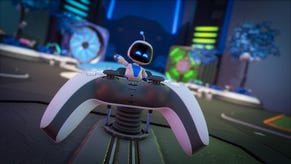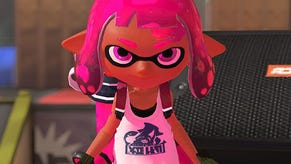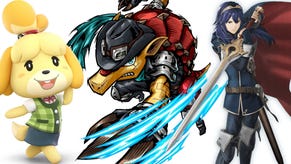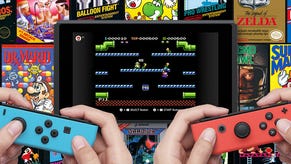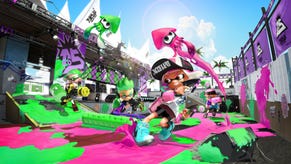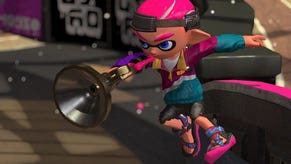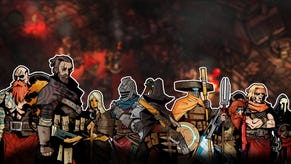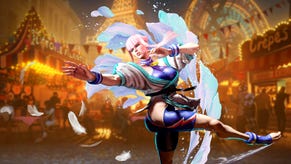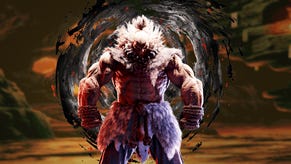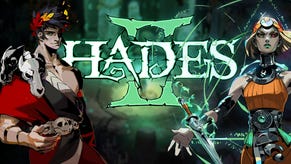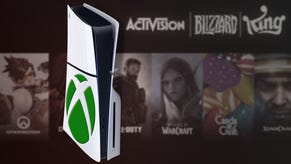Splatoon 2's Single-Player Campaign Keeps the Stakes Grounded
UNPREDICTABLE | Caty plays a bit of Splatoon 2's single-player campaign and watches Spider-Man: Homecoming, the best Marvel movie maybe ever.
This article first appeared on USgamer, a partner publication of VG247. Some content, such as this article, has been migrated to VG247 for posterity after USgamer's closure - but it has not been edited or further vetted by the VG247 team.
Unpredictable is a column from Caty McCarthy about recent games and other happenings bustling in the world of media. This week features the game Splatoon 2 and film Spider-Man: Homecoming.
The stakes in video games are always astronomically high. Save the world, save the princess, save everyone in between. There are games with lower stakes—ones peppered between usually grander ones. In Ni No Kuni, you're just a boy trying to find a way to bring his mom back from the dead. In Neko Atsume, your only goal is to foster a nice home for cats. Some lie sandwiched between bigger conflicts, while others like the latter really aren't.
But mostly, we're urged to save the world. Always. For instance, Persona 5 begins in a grounded way, as Persona 4 once did, before it rushes to a "just kidding, Save The World" typical-JRPG curve towards the end. Ni No Kuni too has a final ten or so hours that work against everything before it once the original quest wraps up. Splatoon 2's single-player campaign, a send-up of the original's short n' sweet story about saving the in-game world of Inkopolis, feels more of the same, but it has a twist: it has a central mystery this time around, one that's far more grounded and personal.

In the first Splatoon, you mildly interact with Callie and Marie, two Inkling pop stars who greet you whenever you launch the game. Callie and Marie are always telling you to stay fresh, while letting you know what stages are cycled in at the moment. They're a warm, adorable presence in the game. Not really fleshed out, but they didn't need to be.
In Splatoon 2, everything's changed. Callie is gone. New pop stars (including a curious Octoling) have risen. Marie is left all alone (in striking traditional garb, a far cry from her outfit from the original game). The only real glimpse we've had of Callie is seemingly her eerie silhouette in the Splatoon 2 campaign poster. (Hmm.)
Splatoon 2's campaign has Marie doing the quest bidding this time around. She urges you, an anonymous mute inkling, to find Callie for her. But not before saving some fish and battling Octolings along the way, I guess. The stakes are personal, low, with Inkopolis' impending doom only the backdrop to finding out what even happened to Callie. While the narrative thread (and collectible lore you find throughout the world) in the couple hours I've played so far in the single-player campaign are minimal, they're far more engaging than the original's. I can't even recall what happened in the original's aside from its last boss fight, now that I think about it.

In the first Splatoon, one of Nintendo's first shiny new IPs in years, the single-player campaign felt secondary. It was still polished and woefully underrated, putting an unexpected twist on the 3D platforming from its multiplayer and transporting it to floaty, abstract levels. But the story, the levels themselves as they spanned floating island to floating island locales, the bosses (aside from the final one), and more were incredibly forgettable in the end. It was a breezy six or so hours—six hours that I enjoyed—that left me wanting something more. Something fuller.
Luckily, at least so far, Splatoon 2 seems to be delivering that, even if on a moment-to-moment basis it feels too familiar at times. The levels are a lot more dynamic, with surfaces to swim across and verticality to explore that's usually missing from most of the original Splatoon's multiplayer maps. The low stakes drama has me feeling engaged and reading the lore that I gather in the form of collectables, as I inch ever closer to finding out what befell poor Callie.

It's the type of story that frankly wouldn't have worked in the first game. Obviously when we first played Splatoon, a game with surface-level personality and not much beyond it, the game hadn't established its supplementary characters yet. The game had characters you only got to know in fourth wall-breaking scenes and nothing really beyond that. We grew to know them through SplatFest events, mini-intros with every game login, the whipsmart writing only got stronger as Splatoon grew in scope with updates and the Miiverse bustled with fan art. If it weren't for its loud (and small) fandom, we likely wouldn't even be seeing a Splatoon 2 today.
I look forward to inking my way through the rest of Splatoon 2's campaign, discovering the truth behind Callie's disappearance, uncovering new weapons at every turn, finding its secrets hidden behind subtle fenced gates. Splatoon 2 is exactly what the first game offered: more Splatoon. At least this time around, it's sandwiched between quirky character intrigue and great music to grind along rails to. (Which in itself is a bit familiar.)

///
Low stakes were also what drew me to Spider-Man: Homecoming, the third reboot of the Spider-Man film franchise. The movie stars a true teenage Peter Parker, complete with awkward fumbles in front of cute girls and general klutziness. Peter feels like a true dork in this Spider-Man, like no other film adaptation. He's haunted not by the memory of the deceased Uncle Ben, but by the living mentor Tony Stark along the way.
I won't lie, I expected to not like Spider-Man: Homecoming because I haven't enjoyed a Marvel movie in ages. (The last one I liked was Captain America: Winter Soldier, in case you're curious.) The Marvel Cinematic Universe has felt really lifeless for a while now, like a multimillion dollar corporation printing money disguised as action movies and merchandise rather than… nerdy movies. Marvel's been peddling out bombastic blockbusters with mediocre everything and not much heart at the center of it all. In Spider-Man: Homecoming though, that's all seemed to have changed.
Spider-Man: Homecoming feels notably lesser than past Marvel movies. Peter isn't trying to save the world. Hell, he's not even trying to save New York City. He's trying to prove himself as a capable hero; a potential Avenger; and gets caught up in trying to keep dangerous weapons off the streets in the midst of it all. His arch nemesis isn't a mega-evil villain either, he's sympathetic. He's a working class man trying to provide for his family. He's sympathetic in the ways Norman Osbourne—the best villain of Spider-Man's film adaptations—once was.
That drama with lesser stakes than, say, aliens invading is part of what made Spider-Man: Homecoming feel so refreshing. It's also what's made the Marvel Netflix series (sans one that Shall Not Be Named) so admirable too: heroes just trying to make their neighborhoods a safer place, the world at large is just secondary.
Maybe this groundedness is a sign of Marvel's new direction. By handing the reigns of the next Thor movie to New Zealand-born director Taika Waititi (filmmaker behind the brilliant What We Do In The Shadows, Boy, and Hunt for the Wilderpeople), I'm hopeful for the future of Marvel and the superhero movies that have long been stale. I can only hope going forward that they're even a teensy bit as fun as Spider-Man: Homecoming was.


